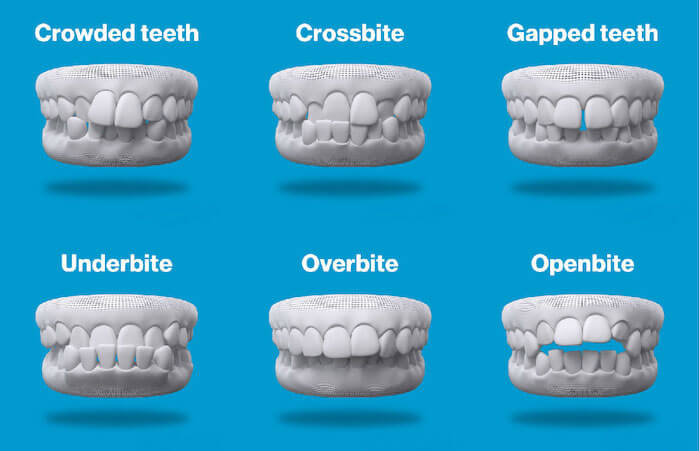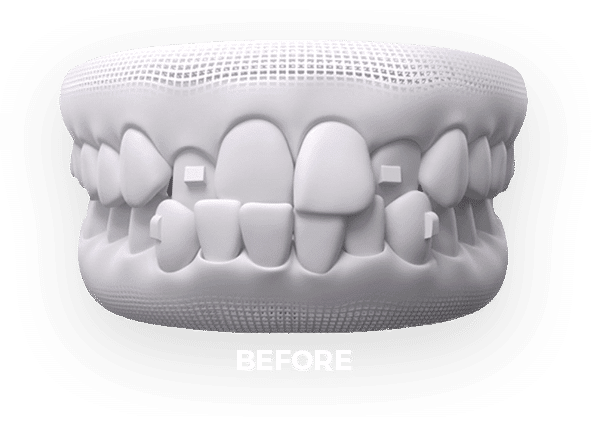The Ultimate Comparison: Invisalign vs. Traditional Braces for Grownups
The Ultimate Comparison: Invisalign vs. Traditional Braces for Grownups
Blog Article
Invisalign vs. Typical Dental braces: Which Choice Is Right for You?
When taking into consideration orthodontic treatment, the choice in between Invisalign and typical braces provides numerous crucial factors that merit careful examination. Invisalign offers a very discreet alternative with removable aligners, while conventional dental braces offer a more visible yet efficient option for serious misalignment. Each alternative includes distinctive benefits and downsides associated with appearances, comfort, therapy duration, and cost. Recognizing these subtleties is crucial for making an informed choice that lines up with your individual choices and lifestyle. The concern remains: which alternative will finest fulfill your orthodontic demands and expectations?
Summary of Treatment Options

On the other hand, traditional dental braces include metal brackets and wires that are bound to the teeth. This method applies continuous pressure over time to attain positioning. While effective for complex orthodontic problems, traditional dental braces require routine gos to for changes and can posture challenges in preserving oral hygiene due to the problem of cleaning around braces and cords.
Both options have their merits, and the selection commonly rests on particular oral problems, lifestyle choices, and patient conformity. Inevitably, seeking advice from an orthodontic specialist is essential for determining one of the most suitable treatment strategy customized to private needs. Comprehending the subtleties of each option can substantially affect the general success of orthodontic therapy.
Aesthetic Considerations
A considerable element influencing the selection in between Invisalign and typical dental braces is the visual charm each therapy uses. Invisalign aligners are crafted from clear plastic, making them virtually unnoticeable when worn.
In contrast, standard dental braces include metal braces and wires, which can be much more recognizable. While improvements in orthodontic technology have actually caused the development of smaller sized brackets and colored elastics, traditional braces still maintain a more conspicuous profile. For some people, the presence of dental braces might prevent them from looking for necessary treatment.
Ultimately, the selection in between Invisalign and conventional braces might depend upon personal preferences pertaining to appearances. Individuals that prioritize discretion usually lean toward Invisalign, while those that are less worried regarding exposure may select traditional dental braces. Understanding the aesthetic effects of each choice is critical for making an educated choice that aligns with one's lifestyle and preferences.
Convenience and Convenience

In terms of ease, Invisalign aligners are detachable, making it possible for clients to enjoy their preferred foods without constraint and keep ideal dental hygiene. Brushing and flossing are simplified, as the aligners can be obtained throughout these regimens, whereas traditional dental braces need careful navigating around braces and cables.
In addition, Invisalign's modern system permits less orthodontic sees. People typically get multiple collections of aligners at as soon as, which can improve the therapy procedure and minimize time spent in the orthodontist's chair. On the other hand, conventional dental braces necessitate normal modifications, making them much less practical for those with busy schedules. Invisalign. On the whole, the comfort and convenience of Invisalign make it an attractive option for many individuals seeking orthodontic treatment.
Therapy Period and Performance
While both Invisalign and traditional braces work in remedying oral misalignments, the period of therapy can differ considerably in between both options. Normally, Invisalign therapy can take anywhere from 12 to 18 months, relying on the complexity of the situation. The clear aligners work by progressively changing teeth right into their wanted positions, and normal follow-ups with an orthodontist assistance make sure development remains on course.
On the other hand, standard braces often need a longer commitment, usually ranging from 18 months to 3 years. This is due to their fixed nature and using brackets and cords, which can be much more effective for complex cases and click to find out more serious imbalances (Invisalign). The therapy efficiency of conventional dental braces is well-documented, as they enable specific modifications and greater control over tooth motion
Eventually, the option between Invisalign and typical dental braces may hinge on both the awaited treatment period and the specific oral problems handy. Consulting with an orthodontist is important, as they can give tailored suggestions based on individual requirements, guaranteeing the chosen method aligns with desired durations and outcomes.
Price Contrast and Insurance Policy Options
Cost plays a substantial function in the decision-making process for people taking into consideration orthodontic treatment, whether selecting Invisalign or traditional dental braces. Typically, the price of Invisalign varieties from $3,000 to $8,000, while conventional dental braces commonly cost between $2,000 and $6,000. Elements affecting these costs consist of the intricacy of the situation, the period of therapy, and geographical location.
Insurance protection can dramatically affect out-of-pocket expenditures. Numerous oral insurance coverage plans offer partial protection for orthodontic treatments, yet the specifics can vary extensively. It is important for clients to assess their insurance coverage plans to determine the degree of coverage for either alternative. Generally, conventional braces might be much more regularly covered by insurance policy strategies compared to Invisalign, which some insurers categorize as an aesthetic treatment.
Additionally, several orthodontic techniques provide versatile layaway plan, making both therapy choices much more available. Patients should ask about prospective funding alternatives and discounts for ahead of time repayments. Examining the overall cost, consisting of insurance advantages and settlement strategies, is necessary for making an informed decision that aligns with both aesthetic preferences and budget factors to consider.

Final Thought
In recap, the selection in between Invisalign and typical dental braces depends upon multiple variables, consisting of visual preferences, comfort, therapy period, and expense. Invisalign offers a very discreet, removable choice that facilitates oral hygiene and nutritional flexibility, while standard dental braces may be better for complex dental concerns and commonly come at a lower cost point. Ultimately, assessment with an orthodontist is important to evaluate private situations and figure out one of the most ideal therapy alternative for attaining optimum oral placement.
When taking into consideration orthodontic therapy, the selection in between Invisalign and typical dental braces presents numerous vital factors that from this source merit mindful assessment.Contrasting Invisalign and conventional braces reveals distinctive treatment choices for orthodontic modification.While both Invisalign and conventional braces are reliable in fixing dental misalignments, the duration of therapy can vary considerably between the two alternatives.Price check out this site plays a considerable role in the decision-making process for people taking into consideration orthodontic treatment, whether opting for Invisalign or typical dental braces.In recap, the option between Invisalign and traditional braces hinges on multiple elements, including aesthetic choices, comfort, treatment duration, and price.
Report this page